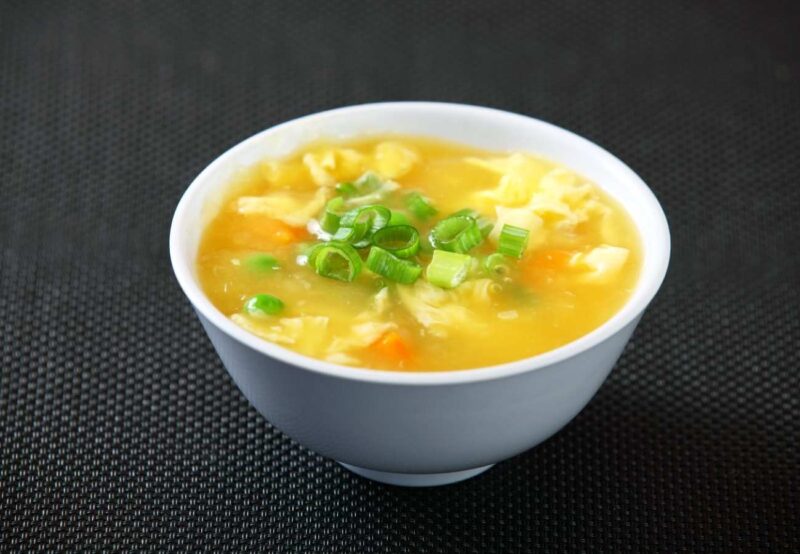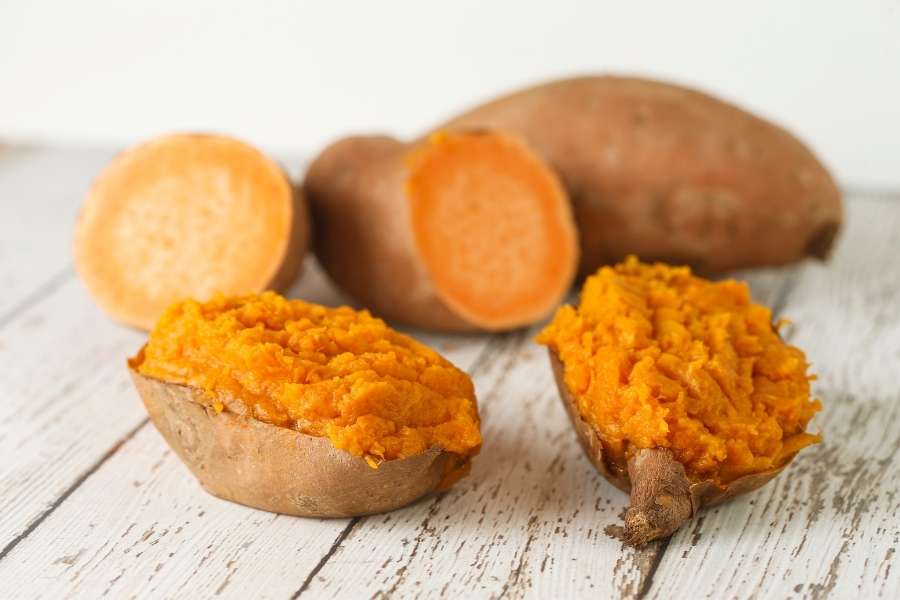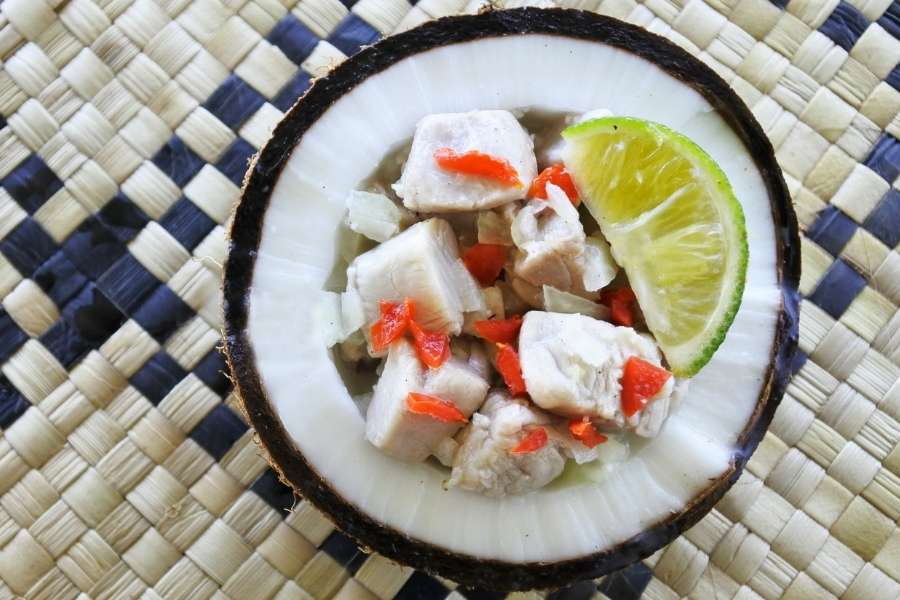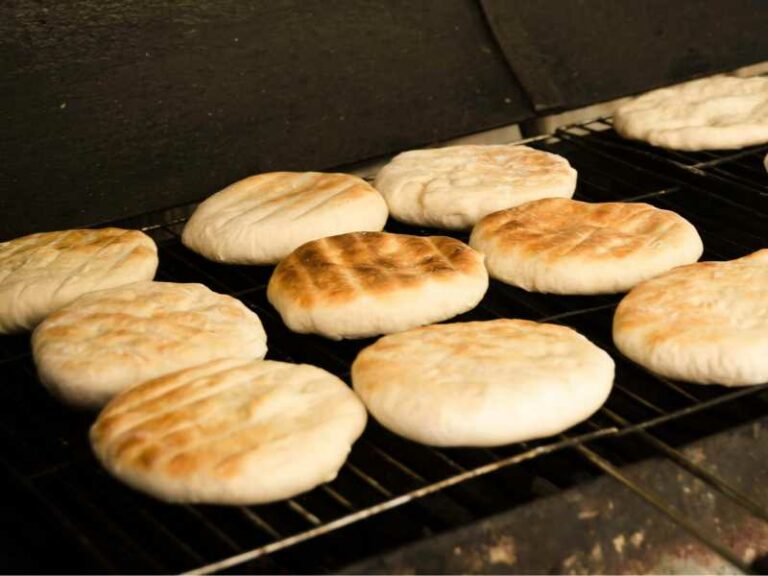Papua New Guinean Food: 9 Traditional Dishes of PNG

Papua New Guinea is a country located in Oceania that includes the eastern half of the island of New Guinea and its offshore islands in Melanesia (a region of the southwestern Pacific Ocean north of Australia).
The country is best known for mainly two things: snorkelling and the Virgin Islands. It is also full of rich resources, nomadic tribes and warm people.
The population of Papua New Guinea is made up of different ethnicities, including Duna people, Latmul people, Abelam people, Asmat people, Tolai people, Melanesians, Telefol people, Gogodala people, Orokaiva people, Hewa people, Marind people and many more.
Approximately 80% of Papua New Guinea’s population is dependent on subsistence agriculture. Hence, a large portion of food and protein consumed in the country is grown locally, while the rest is imported.
Staple ingredients in Papua New Guinea include karuka, sweet potato (kaukau), cassava, breadfruit (ulu), coconuts, bananas and sago. The country’s diet is mainly vegetarian, particularly in the Gulf and Highlands areas. Meat proteins are rarely consumed in the country.
The most traditional dishes of Papua New Guinea are generally based on foods eaten in the eastern part of New Guinea island. So without further ado, here are the absolute must-try traditional dishes of Papua New Guinea along with recipes for you to try for yourself.
Talautu
Talautu is a traditional Papuan dessert that is prepared using shredded coconut flesh, pineapple pieces, sugar, lemon juice and coconut milk. All these ingredients are mixed in a bowl and then consumed, ideally in coconut shells.
This Papuan dish is generally consumed after a big meal. It is extremely easy to make and yet extremely refreshing.
Kol Pis No Rais
Kol pis no rais is dish consisting of a mix of fish (usually canned tuna) and rice. Vegetables like peas and corn are also sometimes added depending on preference and availability.
Kol pis no rais translates to “cold fish and rice”. It is typically consumed in the coastal areas of the island either as a snack or a main course.
Kaima Bona Gatoi
Kaima bona gatoi is a vegetable dish made by grilling eggplants, zucchini, hot peppers and onions. Before grilling, all the ingredients are marinated in a mixture of vinegar, olive oil, herbs and garlic.
It is typically accompanied by barbecued meat and fish.
Kaukau

Kaukau is one of the most popular dishes in Papua New Guinea, prepared using sweet potatoes. The process of their preparation begins by baking them, then peeling the skin and finally mashing the sweet potatoes.
The prepared combination is then usually transferred back to the potato skins. It is baked again for some time until the dish is ready to be served.
Other ingredients added to this dish include coconut milk, coconut oil, garlic, ginger, cheese, eggs or cinnamon. Kaukau is also a Papuan term that normally refers to different types of sweet potatoes.
Bugandi Egg Drop Soup

Bugandi egg drop soup is a type of soup that is prepared using fresh ingredients like spinach, spring onions and choko shoots (a gourd-like pumpkin). All these ingredients are boiled in water and while they are cooking, an egg is dropped into the soup, hence the name.
The dish is hearty and healthy, and it is suggested to consume the soup along with freshly baked soda bread on the side.
Saksak
Saksak are small, rectangular-shaped dumplings that are popular in the coastal areas of Papua New Guinea. They are prepared using sago and mashed bananas, and the prepared mixture is then covered in banana leaves and boiled in coconut milk. People can often use cassava as a substitute for sago.
One can also use aluminium foil instead of banana leaves if they are not available. Saksak is usually served during lunch or dinner.
Mumu
Mumu is a traditional Papua New Guinean dish that is made in a pit or a hole in the ground, similar to the Māori Hāngī delicacy or Peruvian Pachamanca. The pit is filled with hot stones and banana leaves are then placed to line the pit. Finally, layers of ingredients like leafy greens, root vegetables, meat, fruit and a huge amount of coconut milk fill up the leaves.
The prepared combination is lined with an extra layer of banana leaves. It makes sure that the steam doesn’t escape. Making mumu is considered to be a laborious task and it generally involves the entire family, both men and women, old and young.
Kokoda

Kokoda fish is commonly consumed in many island nations in the Pacific. They can be found in the clear streams in the foothills of the rainforests, and are generally consumed as appetizers or snacks.
It is often recommended to consume this fish by accompanying it and serving it with plantain or sweet potato chips and taro, which, combined, pick up all the nutrition of the Kokoda fish. This fish is commonly prepared in either lime or lemon juice for approximately six to eight hours.
It helps to improve the flavour of the dish. One can also add other ingredients to enhance the taste. Some of them include chilies, sliced onions and coriander leaves.
Chicken Pot
Chicken pot is a traditional Papuan dish prepared by first placing the chicken in a pot and adding oil to it. Then ingredients such as chopped kaukau, green onions and corn are added to the dish.
Chicken pot is generally prepared in coconut milk and, after allowing the ingredients to boil for about 30-40 minutes, curry powder and salt are added in order to enhance the taste of the dish.
While serving, the meat and vegetables are placed separately and the liquid is often consumed as a soup or sauce.
The chicken pot is a perfect example of the Papua New Guinea’s cuisine, which is filled with the island’s traditional flavours. It is considered to be one of those dishes that is reminiscent of the foods consumed by the ancestors in the country.






